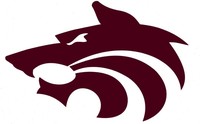(Article in the Victorville Daily Press 1999)
HE SEES THE LIGHT
He also gets help from GTE's Special Needs Center for the deaf and disabled. When Freeman presses a button, the signal displays his code number at the phone company, and an operator comes on the speaker phone. "Joyce Brodie, a consultant for GTE, figures out which equipment would help you most," Freeman said. "Joyce is a real sweetheart."
Raised in the Sierras ("in Rock Creek, right below Lake Crowley"), Freeman worked for years as a bricklayer. But in the 1980s, he and his stepbrother Harvey Ray Harmon caught the gold bug. "Our biggest haul in one day was nearly 10 ounces of gold," Freeman said. "It's hard work moving rocks while you're standing in water and wearing a weight belt. Sometimes, I'd take the day off and lie in the sun with my dog."
In August 1988, Freeman was excited. He'd just discovered what promised to be a rich deposit of gold, and was looking forward to working the site with his brother's help. "The heck with bricklaying!" "Freeman said. "We were going to make some real bucks." But on Aug. 27, 1988, his truck slammed into a tractor trailer loaded with special-order Cadillacs. Characteristically, Freeman joked, "My chest broke the steering wheel, but at least I wiped out three Caddies."
For four months, he lay in a coma. The doctors assured his family that if he survived, he would certainly be a, vegetable. But his family refused to sign the papers canceling life-support.
"I remember going to the light," Freeman said. "There was a bright, white light and a lot of little round things. These were like eggs, all over the place, but I knew they were people. "I remember going fast through a tunnel. When I came to the end, there was nothing but black. That made me mad: I wanted to look out at stars. "Suddenly there were people telling me, 'Go back. You have work to do.' I didn't know it at the time, but my daughter Angie was hooked on drugs and alcohol."
Freeman did return to life. And on Jan. 18, 1990, he moved to Adelanto to help his daughter sober up. "She moved to Flower Mound, Texas, and found herself a job," he said. "I'm real proud of my Angie."
At one point, Freeman was completely paralyzed from the neck down. Today he can move his arms and feet — just a little, but enough to push those buttons and buzzers. "I used to go to a hospital in Northridge," he said, "and work out on a cross-crawl brain-pattern machine, a passive-motion machine that taught my brain how to walk again. I got to the point where I could walk. "But now it hurts too much to move. I take nothing but aspirin. I won't take dope. They wanted to put me on Valium. Or Prozac. Bull! I've got enough problems trying to quit smoking after 50 years." Freeman started smoking at 8? "To be honest, earlier. My parents didn't care. My mom smoked Luckies, and my stepdad smoked Camels."
These days, Freeman puts his trust in neuroscientific research being done by Amgen and other biotech firms. He mentioned in particular a project at Cedars-Sinai Medical Center to reverse nerve and brain damage by taking a few good cells from the patient's brain, reproducing those cells outside the body and then returning them to the brain.
Meanwhile, he studies history — from a highly personal angle. For example, on Nov. 22, 1963, Freeman was in Bishop helping to build a Safeway store. At the same time, he was on his honeymoon. It's hard to tell which memory is strongest: the lovemaking, the news that John Kennedy had been murdered or the fact that the grout in Safeway's roof froze. "That was a very cold winter," he said. "My boss took the building inspector out to lunch, and all of a sudden it wasn't frozen anymore."
Harmon has a habit of stumbling onto treasures, which he then passes on to his brother: for example, a 1947 playbill from the Earl Carrol Theatre in Hollywood and a negative taken of bodies lying in blood. The photographer (identified only by his last name, Ference) scratched, "Moran's gang massacred," across the top of the negative. And along the bottom: "They lived by the gun and died by the gun 2-14-29." Surely, this refers to the St. Valentine's Day massacre in North Chicago, when Al Capone's boys rubbed out George "Bugs" Moran's thugs in the S.M.C Cartage Co. garage. But who was Ference, and why was he there? That's what Freeman would like to know.
By STUART KELLOGG Staff Writer, Photo by Caitlin M. Kelly, Staff Photographer

